Things to do in Zanzibar
Most travellers visit the destination for a beach holiday, and Zanzibar's beaches alone more than justify the trip. The northern beaches of Zanzibar are particularly celebrated for their beauty, and excursions to Pemba Island and Mafia Island are a treat for beachgoers.
Other tourist favourites include Kendwa Beach and Nungwi Beach, which are close together on the northwestern tip of the island, and have good resort facilities; Uroa Bay, in the middle of the east coast, which still retains a pleasant local flavour; Paje Beach, on the east coast, is said to be the best spot on Zanzibar for kite surfing; Nakupenda Beach, accessible by a short boat trip from Stone Town, which is pristine and usually deserted, a true paradise beach; and the beaches of Changuu Island (Prison Island), where beach lounging can be combined with a visit to the old quarantine centre and the resident giant tortoises. It's possible to arrange many different water sports and boat trips, and the scuba diving and snorkelling is world-class.
Zanzibar is more than just picturesque beaches, though, as the Islamic heritage infusing the island with an exotic, ancient atmosphere, and the legacy of the slave trade ensure some historical interest.
The dilapidated beauty of Stone Town is a big draw card for travellers wanting a taste of culture. For those wanting to explore the interior of Zanzibar, 4x4 excursions are popular, and the Jozani Chwaka Bay Conservation Area is the best place to experience the surviving mangrove forests.
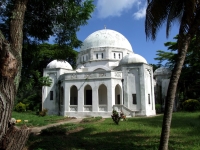
Peace Memorial Museum
Home to a wealth of Zanzibar's memorabilia, the Peace Memorial Museum is a great place to discover the intriguing history and culture of the islands. With exhibits that include tra…
Peace Memorial Museum
Home to a wealth of Zanzibar's memorabilia, the Peace Memorial Museum is a great place to discover the intriguing history and culture of the islands. With exhibits that include traditional carvings and local wildlife displays covering reptiles and birds, visitors can also view relics from the age of the Sultans and early explorers such as Chinese porcelain, an old palm oil-powered bicycle lamp, and David Livingstone's medical chest. Built as a peace memorial by British architect J.H. Sinclair, the beautiful spherical design of the museum acknowledges Zanzibar's Arab influence and is reminiscent of the eastern architecture of Istanbul and India. Visitors should look out for the cumbersome land tortoises that inhabit the Museum's lush garden.
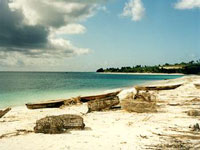
Northern Beaches of Zanzibar
The many superb beaches and picturesque villages around Zanzibar are ideal for those wanting to get away from the bustling town life, and the options along the northeast coast are …
Northern Beaches of Zanzibar
The many superb beaches and picturesque villages around Zanzibar are ideal for those wanting to get away from the bustling town life, and the options along the northeast coast are particularly inviting. Modestly veiled women make bright splashes of colour along stretches of white sandy beach, dhows with curved sails drift along close to shore, and fishermen offer their fresh catches of the day to the simple seaside restaurants. Miles of pristine beaches are dotted with pockets of guesthouses, particularly around Kendwa and the fishing village of Nungwi, which is renowned for its tradition of boat building. There's excellent diving and deep-sea fishing off this coast.
Old Fort
The Old Fort was built at the turn of the 17th century on the remains of a Portuguese church and crumbling Arab garrison. It was constructed to protect the lucrative Spice Islands …
Old Fort
The Old Fort was built at the turn of the 17th century on the remains of a Portuguese church and crumbling Arab garrison. It was constructed to protect the lucrative Spice Islands from invading Portuguese seafarers and Mazrui Arabs of Mombassa. The thick walls and castellated battlements later acted as a place of incarceration, detaining local criminals and slaves. In later years the fort functioned as the depot for the Bububu Railway, Zanzibar's first railway, which once wound from Zanzibar Town to Bububu. Nowadays, the Old Fort houses shops and henna painting stores and the Cultural Centre where visitors can marvel at the fine artistry of local craftsmen at work. In the evening, local music and dancing at the open-air theatre brightens up the night and occasional film screenings are shown.
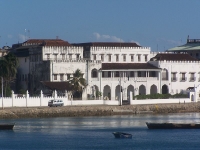
Palace Museum
Illuminating the lifestyle of the Sultans of Zanzibar, the Palace Museum became the official residence of the Al Busid dynasty in 1911. Built in the 1890s, the extensive white buil…
Palace Museum
Illuminating the lifestyle of the Sultans of Zanzibar, the Palace Museum became the official residence of the Al Busid dynasty in 1911. Built in the 1890s, the extensive white building is situated on a harbour road with breath-taking sea views. It is the most recent of the Sultans' palaces and was occupied till the revolution in 1964. The Palace Museum houses an impressive collection of the Sultans' elaborate furniture and possessions, as well as a room dedicated to the life of Sultan Sayyid Said's daughter, Princess Salme. Renowned for her manuscript, Memoirs of an Arabian Princess, this significant autobiography is the only known written account of what life was like for Arab women of the Royal court in the 1800s. Excerpts from the book, family photographs, and samples of Princess Salme's wardrobe are also on display.
Anglican Cathedral and Slave Market
The colossal Anglican Cathedral in Stone Town is located on the grounds of the island's largest former slave market. The cathedral's altar stands on the exact location of the forme…
Anglican Cathedral and Slave Market
The colossal Anglican Cathedral in Stone Town is located on the grounds of the island's largest former slave market. The cathedral's altar stands on the exact location of the former whipping post, a tree where slaves were brutalised to show their strength and resilience to potential slave owners. Building began in 1873 to commemorate the end of the slave trade and was conducted by Edward Steere, third bishop of Zanzibar and a fervent abolitionist. The cathedral has a combination of Gothic and Arabic styles and is noted for its Basilica shape and barrel vault roof, which the populace believed would never hold. Edward Steere died of a heart attack during construction and was buried behind the altar.
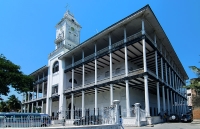
House of Wonders (Beit el-Ajaib)
The first building in Zanzibar to have electricity and the first building in East Africa to have an elevator, Beit el-Ajaib (which translates into the House of Wonders) was the for…
House of Wonders (Beit el-Ajaib)
The first building in Zanzibar to have electricity and the first building in East Africa to have an elevator, Beit el-Ajaib (which translates into the House of Wonders) was the former ceremonial palace of Sultan Barghash and was built in 1883 on the site of the 16th-century Queen Fatuma's residence. A striking white building, the House of Wonders has housed many influential tenants, such as the British, who used it as their local offices, and Tanzania's political party CCM, who used it as their headquarters. While the building is now in disrepair and not open to the public, one can still admire the architecture. The multiple verandas, Arabic arches, heavy wooden door, and embossed cannons are all a fascinating.
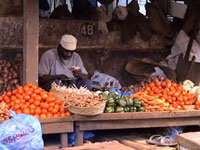
Central Market
A vibrant array of colours and spicy scents lures visitors to the lively Central Market in Stone Town. Opened in 1904, the numerous stalls run over with tropical fruits, exotic spi…
Central Market
A vibrant array of colours and spicy scents lures visitors to the lively Central Market in Stone Town. Opened in 1904, the numerous stalls run over with tropical fruits, exotic spices, brightly coloured khangas (worn by local women), and rare provisions such as pomegranates and red bananas. Locals come daily from the surrounding areas to display their subsistence wares, and fishermen display their catch of the day with a pungent selection of fresh fish from huge marlins to salty sardines. The market is chaotic and can prove a bit overwhelming for some people, but it is an exciting, colourful cultural experience and worth a quick stroll at least. Foodies will enjoy sampling the rare fruits and local specialities. Speaking of food, the best place for a sampling of traditional street food is the night market by the waterfront of the Forodhani Gardens.

Jozani Chwaka Bay Conservation Area
The largest conservation area in Zanzibar and the only remaining natural mangrove forest on the island, the Jozani Chwaka Bay Conservation Area is renowned for its hairy ape reside…
Jozani Chwaka Bay Conservation Area
The largest conservation area in Zanzibar and the only remaining natural mangrove forest on the island, the Jozani Chwaka Bay Conservation Area is renowned for its hairy ape residents, the Red Colobus Monkeys. Endemic to Zanzibar, these entertaining, highly endangered creatures attract visitors from far and wide. Due to large-scale cultivation, firewood collection, harvesting building materials and charcoal and lime making, Zanzibar's forests have been largely depleted, making the Jozani Chwaka Bay conservation area a significant natural landscape and well worth protecting. Nature lovers can walk through the 100 different towering tree species and marvel at the rich variety of birds and other small wildlife that inhabits the cool woodland area. Exploring the mangrove forest is a refreshing break from the sunny beaches.
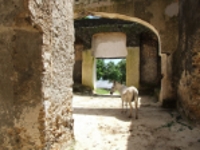
Mtoni Palace Ruins
If visitors are looking for a place to escape the bustle of Stone Town for a few hours, they should head north to the peaceful Maruhubi and Mtoni Palace ruins. Sultan Said bin Sult…
Mtoni Palace Ruins
If visitors are looking for a place to escape the bustle of Stone Town for a few hours, they should head north to the peaceful Maruhubi and Mtoni Palace ruins. Sultan Said bin Sultan first built Mtoni between 1828 and 1834 after he left Muscat and made Zanzibar his throne. It was also the childhood home of Princess Salme. The decadent Maruhubi Palace was built later in the 1880s by Sultan Barghash as a harem for his 99 concubines and wife. The structure was mainly wooden and one of the most beautiful of its time, but was gutted by a fire in 1889 and left in ruins. The rolling lawns, bathhouses, and water lily ponds are reminiscent of the affluent lives enjoyed by the palace residents over a century ago. To view a well-preserved Hammam from the 1800s, travellers should continue north to the Kidichi Persian Baths, constructed by Sultan Seyyid Said for his Persian wife.
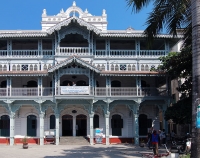
Old Dispensary
An architectural symbol of Zanzibar's diverse cultures and histories, the elaborate Old Dispensary was so named because it once housed a pharmacy, dispensary, and doctor. An afflue…
Old Dispensary
An architectural symbol of Zanzibar's diverse cultures and histories, the elaborate Old Dispensary was so named because it once housed a pharmacy, dispensary, and doctor. An affluent Ismaili Indian merchant, Tharia Topan, who financed the building project, laid the first brick 1887 and the building was completed in 1894. One of the most decorative buildings of the time, the Old Dispensary is adorned with ornate carved balconies, stuccowork, and stained-glass windows. Restored in the early 1990s, it had a small museum that displayed old photographs of Stone Town's waterfront, though the upper floors are now mostly empty. For a stunning view of the harbour, travellers should visit the upper veranda, which is open for visitors.
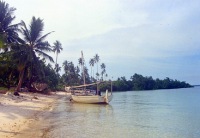
Mafia Island
Mafia Island, along with Pemba and Zanzibar, form the famous Spice Islands off the coast of Tanzania. While the name conjures images of shady criminals and glamorous heists, the re…
Mafia Island
Mafia Island, along with Pemba and Zanzibar, form the famous Spice Islands off the coast of Tanzania. While the name conjures images of shady criminals and glamorous heists, the real riches of Mafia Island lie underwater in its magnificent coral reef system. Mafia Island is a top diving destination for those in the know. Limited accommodation means it's a great place to hide from the tourist crowds on Zanzibar, and provides additional opportunities for fishing and swimming with whale sharks. There are also land-based activities, including trips to the bustling village on tiny Chole Island and the ruined one on Juani Island.
Website www.mafiaisland.com
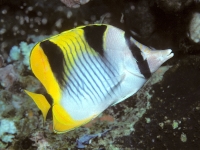
Pemba Island
Located approximately 31 miles (50km) to the north, the small and unspoilt Tanzanian island of Pemba is becoming a popular alternative for visitors seeking a quieter and less devel…
Pemba Island
Located approximately 31 miles (50km) to the north, the small and unspoilt Tanzanian island of Pemba is becoming a popular alternative for visitors seeking a quieter and less developed alternative to Zanzibar. Pemba is known as the 'Green Island' in Arabic and is one of several islands that make up the Zanzibar Archipelago. The island trio consisting of Pemba, Zanzibar, and Mafia is traditionally referred to as the Spice Islands. This undulating, fertile island hosts a number of small and large scale farming enterprises. This backdrop of cultivated countryside makes for some interesting and fragrant sightseeing. Pemba offers some great dive sites with abundant marine life, untouched corals, and dizzying vertical drop-offs. The towns of Chake-Chake (the capital), Mkoani, and Wete have some interesting cultural and archaeological attractions influenced by the local Arab and Waswahili peoples.



